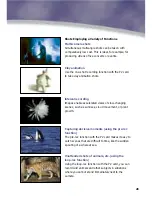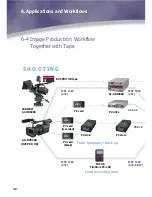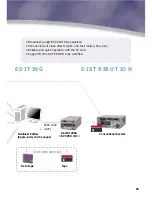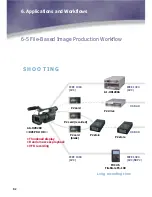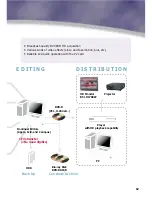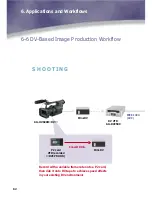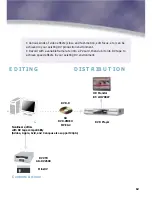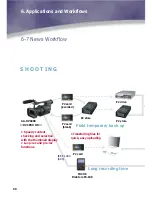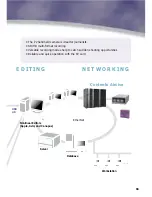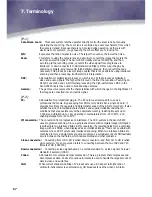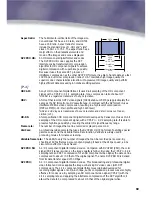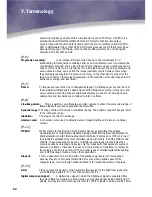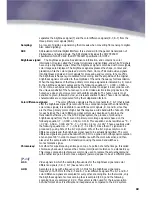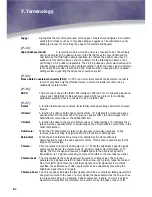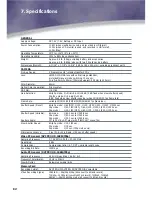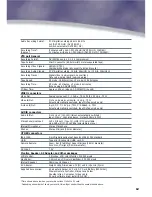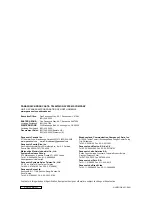
7. Terminology
57
[P.1]
Cam-driven zoom:
This zoom system lets the operator directly control the zoom lens by manually
operating the zoom ring. The zoom lens is controlled by a cam mechanism, from which
the name is derived. Because there is no time lag during operation, as there is with
electronic zoom systems, you get exactly the zoom effect you’re looking for.
S/N:
Expresses the ratio of signal to noise. The larger the number, the lower the noise.
Scan:
This refers to using the camera lens and circuitry to convert the image that enters the
lens into an electric signal. The AG-HVX200 initially scans at 1080/60p, and then,
according to the recording mode, converts the video signal from progressive to
interlaced, or down-converts it to SD (standard definition). In this way, it begins by
capturing complete, progressive HD (high definition) images, then converts them as
necessary. This produces a level of image quality that is not possible by using interlaced
scanning and then processing it with electronic interpolation.
DSP:
Abbreviation for digital signal processor, which is an LSI that processes digitalized
video and audio signals. The higher the bit count, the finer the resolution. Featuring 14-
bit A/D conversion and 19-bit internal processing, the high-performance DSP in the
AG-HVX200 rivals those used in broadcasting cameras.
Gamma:
The gamma curve represents the characteristics with which changes in the brightness of
the image are converted into an electric signal.
[P.2]
P2:
Abbreviation for professional plug-in. The P2 card was developed for use as a
professional AV media. By packaging four SD Memory Cards into a single P2 card, it
provides four times the capacity and data transfer speed of the SD Memory Card. It also
exhibits the kind of remarkable characteristics and superior reliability under harsh
conditions that are possible only with a solid-state memory, resisting impacts up to
1,500G and vibration up to 15G, operating in temperatures from -20 to 60°C, and
enabling storage from -40 to 80°C.
P/I conversion:
The conversion from progressive to interlaced. The CCD system in the AG-HVX200
uses progressive scanning. Since a progressive frame with complete image information
is divided into two interlaced fields in P/I conversion, the resulting fields form a complete
image, with no shifting, when displayed as an interlaced image. This is not possible with
cameras whose CCD system uses interlaced scanning. When two interlaced fields are
combined to form a single frame showing movement, a certain amount of shift inevitably
occurs between the two fields, which causes blurring and other problems.
Cross-conversion:
Converting from HD to SD is called down-conversion, and from SD to HD is called
up-conversion. Cross-conversion refers to converting between the two 1080 and 720
formats of HD (1080720).
Down-conversion:
Converting a video signal based on a certain standard to a video signal of a lower
standard. Example: (HDSD)
Codec:
Abbreviation for compression/decompression. This is a program that compresses and
decompresses data. Codecs for various formats are used to handle the large amount of
data in video and audio files.
16:9:
While current standard-definition TV broadcasts use a 4:3 aspect ratio (the ratio of
vertical-to-horizontal screen dimensions), HD broadcasts use the wider, 16:9 ratio.




